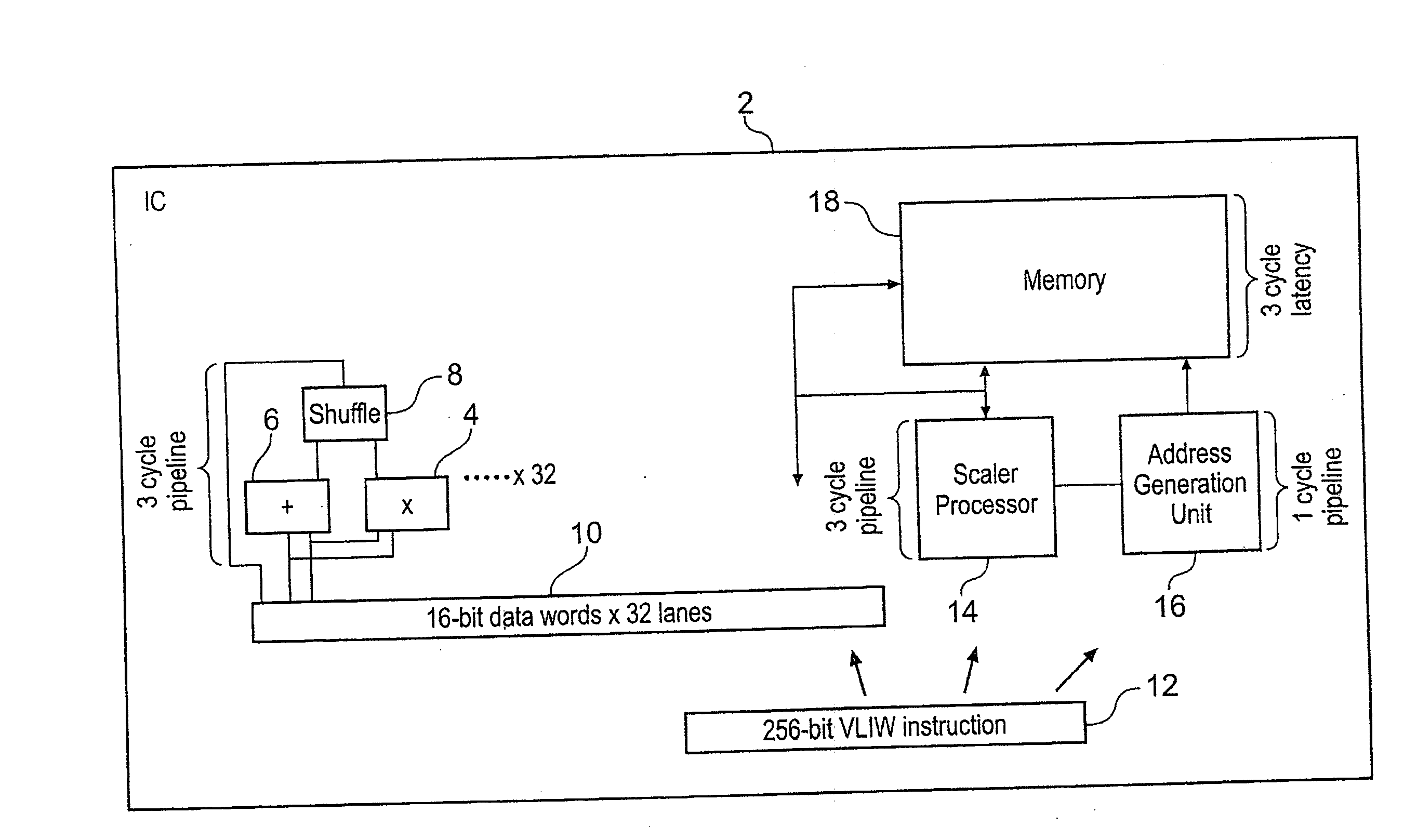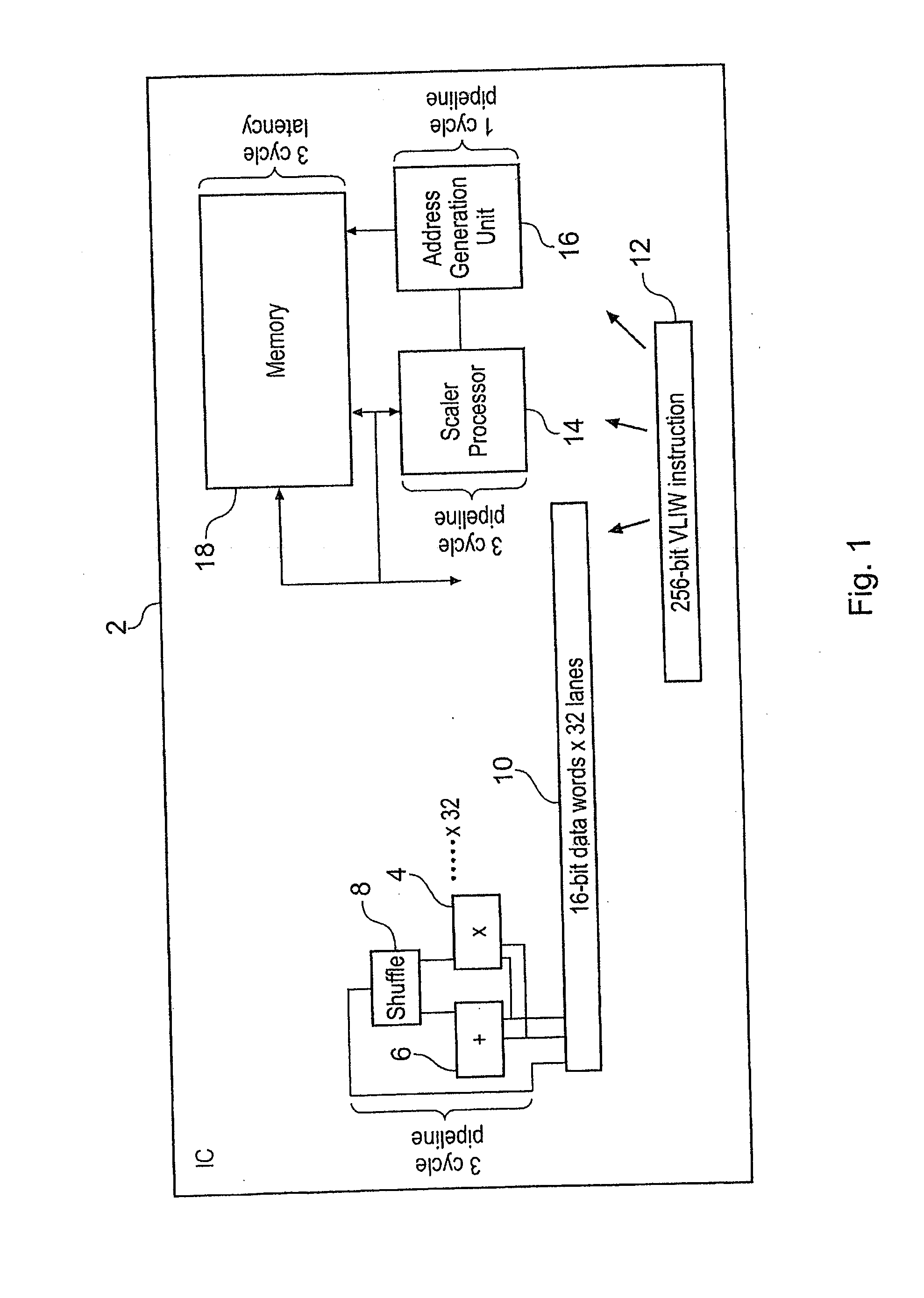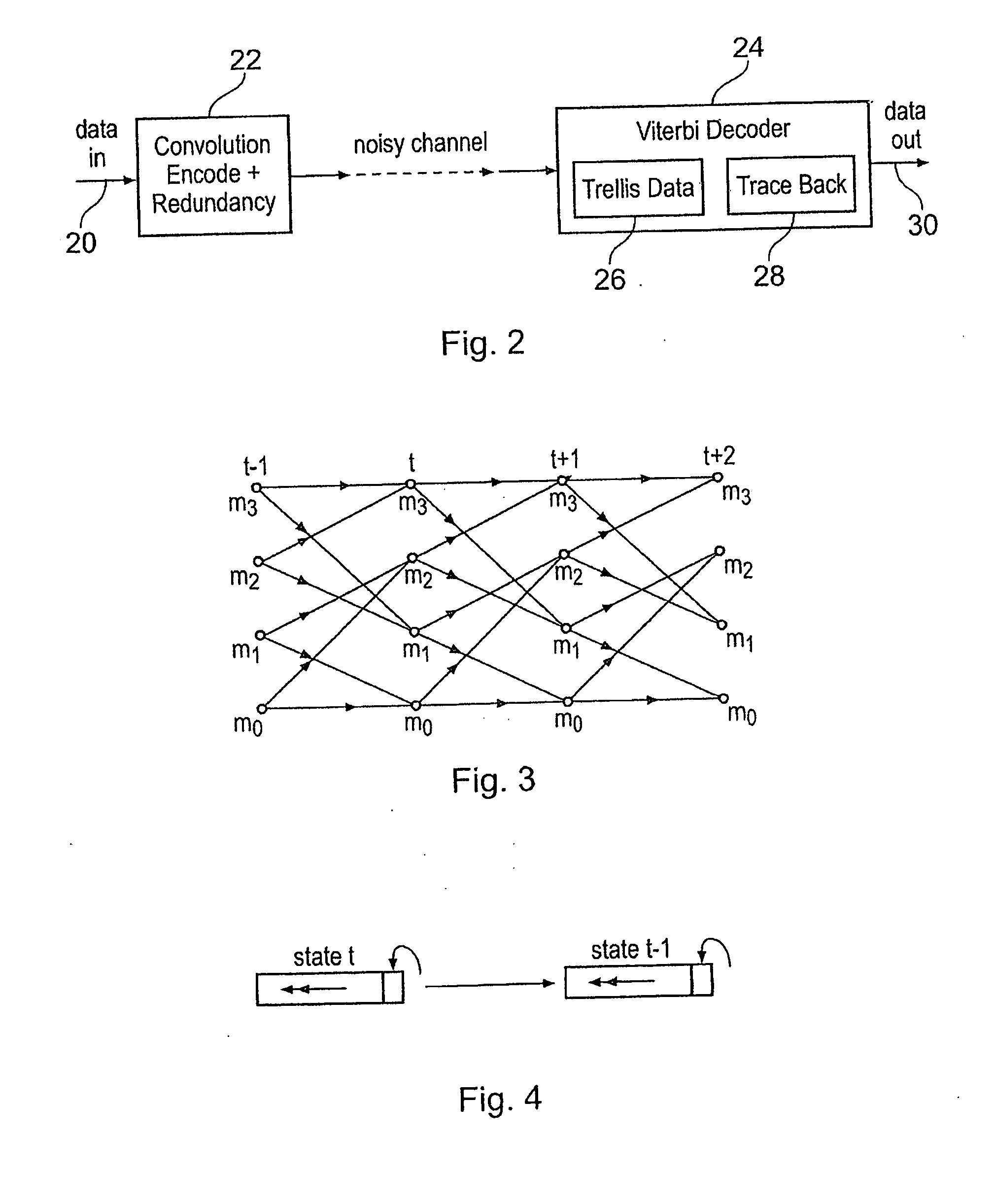Address calculation and select-and insert instructions within data processing systems
a data processing system and address calculation technology, applied in the field of data processing systems, can solve the problems of high computational load and high levels of computation, and achieve the effect of reducing processing bottlenecks and high efficiency
- Summary
- Abstract
- Description
- Claims
- Application Information
AI Technical Summary
Benefits of technology
Problems solved by technology
Method used
Image
Examples
Embodiment Construction
[0089]FIG. 1 shows an integrated circuit 2 adapted to perform software radio processing functions. Software radio places heavy demands upon the processing capabilities of such a programmable integrated circuit. The data throughputs required are large and it is important to balance the different elements provided within the integrated circuit 2 in order that all the elements are used with a high degree of efficiency. In the illustrated example, thirty-two parallel lanes, each sixteen bits wide, for performing multiplication, addition and shuffle operations upon arithmetic values are provided. Each of these lanes includes a multiplier 4, an adder 6 and a shuffle unit 8. 16-bit data words are taken from a respective lane within an input value register 10 to provide input operands to the multiplier 4, the adder 6 and the shuffle unit 8. The multiplier 4, the adder 6 and the shuffle unit 8 form a three-cycle deep pipeline such that the results of a calculation will be available three cyc...
PUM
 Login to View More
Login to View More Abstract
Description
Claims
Application Information
 Login to View More
Login to View More - R&D
- Intellectual Property
- Life Sciences
- Materials
- Tech Scout
- Unparalleled Data Quality
- Higher Quality Content
- 60% Fewer Hallucinations
Browse by: Latest US Patents, China's latest patents, Technical Efficacy Thesaurus, Application Domain, Technology Topic, Popular Technical Reports.
© 2025 PatSnap. All rights reserved.Legal|Privacy policy|Modern Slavery Act Transparency Statement|Sitemap|About US| Contact US: help@patsnap.com



